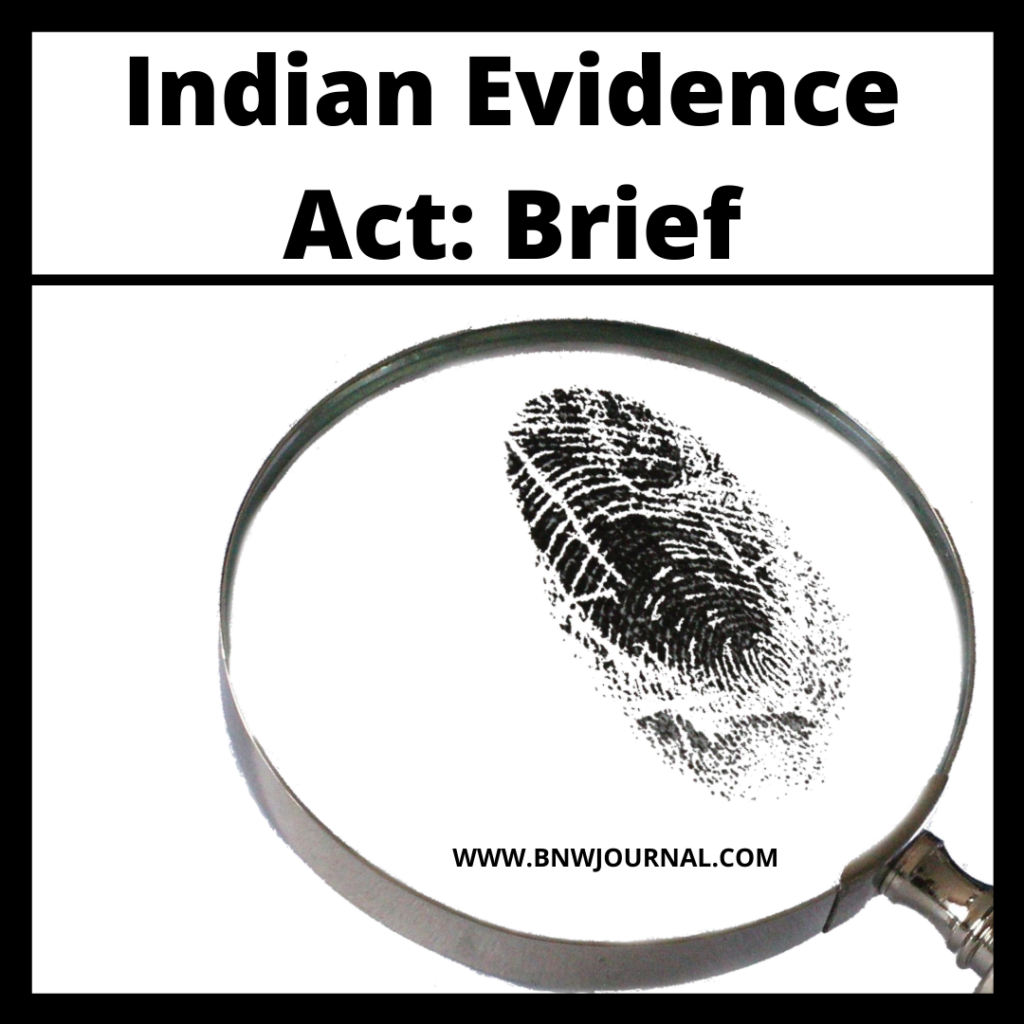![]()
The Indian Evidence Act came into force in the year 1872. The code is draft by Sir James Stephen which is the law that is being followed to the present day. The first attempt to codify the rules relating to evidence was made in 1835. Thereafter, about eleven enactments dealing with the law of evidence were made between the years 1835 and 1853. All of which found to be inadequate. A draft prepared by Sir Henry Maine in 1868, was rejected having been found unsuitable to the Indian conditions.
Finally, the Evidence Act came to enact which applies to the whole of India. And in all the proceedings before the court including the court-martial. But does not apply to the court-martial convened under the Army Act, Naval Discipline Act or the Air Force Act. The Act also does not apply to affidavits presented to any court, nor proceedings before an arbitrator.

The present Act has 167 sections that are divided into 11 chapters. There are two cardinal principles of the law of evidence. What is relevant may be proved; but everything relevant may not be admissible as evidence. The admissibility of the evidence is tested based on the ‘truth value’ of the relevant facts.
In English law, the law of evidence generally states what facts cannot be adduce as evidence. The inference being that the rest of them can be adduce as evidence. The Evidence Act, on the other hand, attempts to state positively as to what facts are relevant. Hence, the law of evidence attempts to answer the following:
What kinds of facts may be proved to establish the existence or non-existence of a fact or a fact in issue?
Section 6 to 16 of the Act, state that the facts which are logically connected to the facts in issue and which make the existence or the non-existence of the facts in issue probable or improbable, can be proved. For example, in a trial for murder, the fact that the accused had a motive for committing the murder makes the inference of murder possible. Similarly, the fact that he purchased some poison, just before the murder, when the death is suspected to have been caused by such poison, makes his having committed the murder possible.
Thus, the gist of the contents of sections 6 to 16 is that whenever a fact, either by itself, or in connection with other facts makes the legal inference of the existence or non-existence of the fact in issue, such facts, become relevant, and maybe proved.
What kind of proof is to be given of those facts?
The general principle is that the best evidence must be given in all cases. The best evidence is the evidence of facts that holds the maximum truth value. Hearsay evidence is not admissible under Section 60 of the Act, but it can be admitted in exceptional circumstances. The contents of the document cannot normally be proved by oral evidence when the law requires a transaction to be contained in the document. This rule is contained in the statement that primary evidence must be given unless secondary evidence is permitted to be given.
Who is to give the proof?
This question deals with the burden of proof. Certain facts need to be proved because the court takes notice of them. Certain facts must be proved by one of the parties to the dispute. The party that has the responsibility of proving a certain fact is said to have the burden of proof (onus of proof) on him.
There are cases where the Evidence Act lays down that the court shall presume a particular fact. Unless and until it is disprove. There are certain circumstances when the law says that the court must believe in the existence of a thing. And should not allow any evidence to disprove such a thing. Thus, one fact may be declared to be conclusive proof of another.
How is the proof to be given?
In this part of the law of evidence, questions relating to the competency of the witness, as also the method of examining the witnesses and testing their veracity are explained. The rule is that, all persons, who are capable of understanding the nature of the questions put to them, and who can answer those questions, can be witnesses. There is also a law relating to the law of privileged communication. There are some situations, where the law prescribes that one person shall not give evidence of certain communication. That he receive under particular circumstances. For example, a wife or a husband cannot give evidence of the communication which he or she receive from the other party to the marriage during the period of marriage. Except in suits between married persons or when either the husband/ wife is prosecuted for any crime committed against the other.
Conclusion-
The Evidence Act thus lays down procedures that help the courts in taking evidence of the parties. It is to enable the courts to find out the truth based on the facts brought before the court by the parties. This in turn helps the courts in meeting the ends of justice as expeditiously as possible.



0 Comments